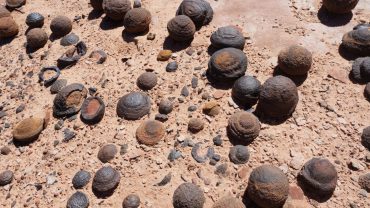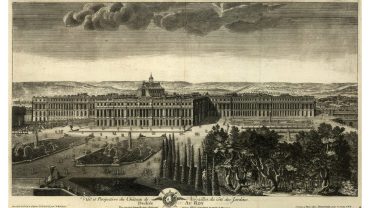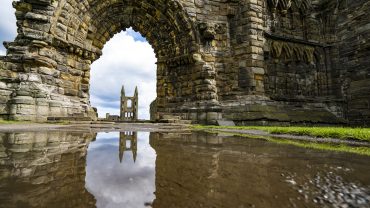In the late fifteenth and early sixteenth centuries, in a period known as the Age of Discovery, Amerigo Vespucci emerged as a pivotal figure. His journeys across the Atlantic on behalf of Spain and Portugal not only challenged the prevailing geographical knowledge of the age but also led to the naming of a new continent.
However, Vespucci’s voyages have been shrouded in controversy. Historical records and letters – almost entirely written by, or attributed to, Vespucci himself – suggest that he embarked on four voyages to the New World, yet some historians dispute the authenticity of these claims and much of the history of Vespucci’s life.
Did he take as many trips as he claimed? What did Vespucci discover? Was he a fantasist? And why was it left to a German cartographer to first put the word America on a map?
Let’s journey back to the High Renaissance in an attempt to shed light on the accomplishments of the enigmatic Amerigo de Vespucci and his claim to fame.
The Early Life of Amerigo Vespucci

A younger portrait of Amerigo Vespucci. (Credit: API / Contributor via Getty Images)
Amerigo Vespucci’s early years were instrumental in shaping his future exploits. Born in 1451 into a well-known family in Florence, a hub for Renaissance art and learning, he was surrounded by academic and commercial influences from a young age.
He was the youngest son of Lisa di Giovanni Mini and Nastagio Vespucci, a legal notary for the Money Changing Guild. His two older brothers, Antonio and Girolamo, went to the University of Pisa, but Amerigo stayed in Florence itself. Instead, he was taught by his uncle, a Dominican friar and a renowned humanist scholar.
The young man was said to have been exposed to science, history, geography, Latin, literature, maths and philosophy, as well as cartography and navigation. Areas of learning that would stand him in excellent stead later in life. His familial connections and the intellectual environment of Renaissance Florence nurtured his curiosity and passion for exploration.
Vespucci in Employment

Columbus on the Santa Maria (Credit: GraphicaArtis via Getty Images)
Aged 27, Vespucci accompanied his cousin Guido Antonio Vespucci on a diplomatic mission to Paris to garner Louis XI’s support for a Florentine war with Naples, but they returned empty-handed.
He then worked for a time with his father but when Nastagio died in 1482, he gained employment with a member of the Medici family. He was eventually dispatched to Seville in Spain and began working with another Florentine businessman, Gianotto Berardi, who was involved in financing the voyages of Christopher Columbus.
Amerigo Vespucci, sometimes referred to as Amerigo de Vespucci in early texts, was a permanent resident of Seville by 1492. He’s thought to have married Maria Cerezo around this time. Vespucci allegedly claimed she was the daughter of Gonzalo Fernández de Córdoba, a successful Spanish general nicknamed El Gran Capitán, or the Great Captain. However there’s no evidence to suggest she was his daughter and it’s likely Vespucci was grandstanding to advance his place in the upper echelons of Spain’s tight-knit naval and royal circles.
Perhaps around 1496, it’s said that two of the world’s great explorers, Vespucci and Christopher Columbus, met after the latter returned from his famed 1492 voyage.
Vespucci Voyages to the New World

Second voyage of Amerigo Vespucci (Credit: ullstein bild Dtl. / Contributor via Getty Images)
For one of the most famous names in exploration, Vespucci’s maritime manoeuvrings are mired in mystery.
Amerigo Vespucci claimed he made four voyages to the New World, detailed in letters he wrote or was alleged to have written. However, for centuries historians have questioned not just the author of these letters, but their veracity. The middle two voyages are very well documented but the first and the fourth are disputed.
In addition, historians, researchers and academics have questioned Vespucci’s involvement, while some have suggested he didn’t accomplish nearly as much as has been claimed.
Voyage 1: Disputed
Amerigo Vespucci is alleged to have travelled from Spain to the New World between May 1497 and October 1498. However the only account of the trip is from a letter written by Vespucci to a Florentine statesman named Piero Soderini. Many historians believe the letter to be a forgery. In it, Vespucci claims the party travelled northwest from Honduras for 870 leagues (approximately 4,800km or 3,000 miles) which would have taken them across the landmass of Mexico all the way to the Pacific coast. Contemporary Spanish historian Bartolomé de las Casas suggested Vespucci fabricated the journey – perhaps one from a later voyage – to claim supremacy over Columbus and to be recognised as the first European to discover the mainland.
Voyage 2: Confirmed
Led by Spanish conquistador Alonso de Ojeda, a small fleet left Spain in May 1499 with Vespucci aboard. In Vespucci’s correspondence, he suggests that his role was as one of the voyage’s leaders, but given his relative inexperience on the high seas, this was unlikely. He may have been sent along as a representative of the men who funded the voyage. Years after they returned, de Ojeda wrote that ‘Morigo Vespuche’ was one of the ship’s navigators.
The expedition is believed to have followed a route along the northern coast of South America. Amerigo de Vespucci and the team explored parts of what is now known as Guyana, Venezuela, and possibly the northern tip of Brazil. This journey was crucial in establishing that the land they were exploring was a separate continent, not part of Asia as Christopher Columbus had initially believed.
What did Vespucci discover? His accounts from this voyage provided valuable insights into the geography of the New World. The knowledge gained from this voyage significantly contributed to the European understanding of the Western Hemisphere. It influenced the cartographic representation of the newly discovered lands, eventually leading to the use of the name America for the continents.
Voyage 3: Confirmed
In 1501 under the leadership of Portuguese explorer Gonçalo Coelho, Vespucci voyages to the New World again. Setting sail from Lisbon in 1501, the expedition journeyed along the eastern coast of South America from the Cape of Santo Agostinho in Brazil down towards Patagonia. This voyage was a venture into uncharted territories that would reshape the European understanding of the world.
His observations extended beyond mapping coastlines. He studied the stars, the climate, and the natural environment. These meticulous records contributed significantly to the pool of European knowledge about the South American continent.
Perhaps the most profound impact of this voyage lay in its confirmation of Vespucci’s growing belief that these lands were part of a new, previously unknown continent, separate from Asia. This realisation was a pivotal moment in history, drastically altering the geographical perceptions of the era. It was this voyage that reinforced the idea of calling this new land ‘America,’ a lasting tribute to Amerigo Vespucci’s contributions to the Age of Discovery.
Voyage 4: Disputed
Mirroring the so-called evidence of the first alleged voyage, Vespucci wrote in the Soderini letter that under the crown of Portugal, he explored the east coast of Brazil in 1503, again with Gonçalo Coelho. There’s evidence that a voyage did happen around this time but no confirmation that Vespucci was on board.
Who Named America?

A Portuguese navigation nautical chart by Martin Waldseemüller (Credit: API/Gamma-Rapho via Getty Images)
The naming of the newly discovered continent as ‘America’ in honour of Amerigo Vespucci can be traced back to a 1507 map created by German cartographer Martin Waldseemüller.
This pivotal moment in history was influenced by Vespucci’s detailed letters – especially the disputed Soderini letter – describing his voyages to the New World, which Waldseemüller encountered.
Intrigued by Vespucci’s assertion that the lands he explored were part of a new continent, separate from Asia, Waldseemüller was convinced of the significance of Vespucci’s discoveries, even though to this day, many others are not.
In his map, titled Universalis Cosmographia, Waldseemüller chose to name the new continent ‘America,’ a Latinised version of ‘Amerigo,’ in recognition of Vespucci’s contributions. This map, widely circulated, played a key role in popularising the name, permanently associating Vespucci with one of the most significant geographic discoveries in history.
Interestingly, Waldseemüller later retracted his belief that Vespucci discovered the new continent and went as far as removing his name from future maps, however by the 1530s, the name America was firmly fixed on world maps, including the Mercator projection still used today.
Was America Named After Amerigo Vespucci?

Copper engraving of Vespucci by Strandanus Galle (Credit: Bettmann via Getty Images)
The majority of historians generally agree that the name America comes from a Latinised version of Amerigo de Vespucci’s name, but there are alternative theories and suggestions that challenge this conventional belief.
Richard Amerike
One theory proposes that America was named after Richard Amerike (ap Meryk or Ameryk), a Welsh merchant and customs officer. According to this theory, Amerike, who was a principal sponsor of John Cabot’s voyages to the New World, may have had the continent named after him as a form of recognition for his financial contribution. However, this theory, first proposed in 1908 by a scholar from Bristol named Alfred Hudd, has some, albeit very little, documentary evidence and is not widely accepted by historians.
Native American Place Name
Another theory proposed to answer the question ‘who named America’ suggests that it could have originated from a Native American word or place name that sounded similar to ‘America’. Like the Amerike theory, there is little evidence to substantiate this claim, and it remains speculative. In a similar vein, the early Spanish explorers may have heard mention of the Ammerisque mountain range in modern-day Nicaragua and the name eventually morphed into America. While intriguing, there is no supporting historical evidence to suggest this theory carries any weight.
Misinterpretation
Some historians argue that the naming could be the result of a misinterpretation or misattribution by mapmakers, particularly Martin Waldseemüller, who first used the name America on a map in 1507. Waldseemüller initially believed that Amerigo Vespucci, rather than Columbus, had discovered the new continent, leading him to name it after Vespucci. The mapmaker later retracted this belief, but the name had already gained traction.
While the Amerigo Vespucci origin remains the most widely accepted and documented theory as to how America gained its name, these alternative suggestions add an intriguing layer of mystery and speculation to the story of who named America. However, it’s important to note that the majority of historical evidence and scholarly consensus still favours the Vespucci theory.
Was Amerigo Vespucci one of the World's Great Explorers?

Portrait of Amerigo Vespucci (1454-1512). (Credit: Universal History Archive / Contributorı via Getty Images)
Debate rages on as to the veracity of Vespucci’s claims and achievements. He has been called ‘the most enigmatic and controversial figure in early American history.’
How many voyages to the New World did he take? Did he write all the letters attributed to him? Were his roles on the voyages he did take as important as he claimed?
In the sixteenth century Bartolomé de las Casas went so far as to call Vespucci a liar who stole the credit due to Columbus. In the nineteenth century, American philosopher Ralph Waldo Emerson called Vespucci a ‘thief’ and a ‘pickle dealer’ who got ‘half the world baptised with his dishonest name.’
Whatever the truth, Martin Waldseemüller was most likely the person who named America, and his attribution of this name to Amerigo Vespucci has remained with us ever since.
A Legacy in Letters: The Fascinating Story of Amerigo Vespucci

Waldseemüller's 1507 Universalis Cosmographia (Credit: Photo 12/Universal Images Group via Getty Images)
Navigating a sea of historical intrigue and controversy, Amerigo Vespucci, a central figure in this tale, remains shrouded in mystery, with doubts cast over the veracity of his voyages and claims.
Despite the uncertainty surrounding the answer to the question ‘what did Vespucci discover,’ it was the 1507 map by Waldseemüller that cemented the Florentine’s name in history. This decision, influenced as much by the era’s fascination with discovery as by the ambiguity surrounding Vespucci’s accounts, encapsulates the complex interplay of exploration, storytelling, and historical record.












